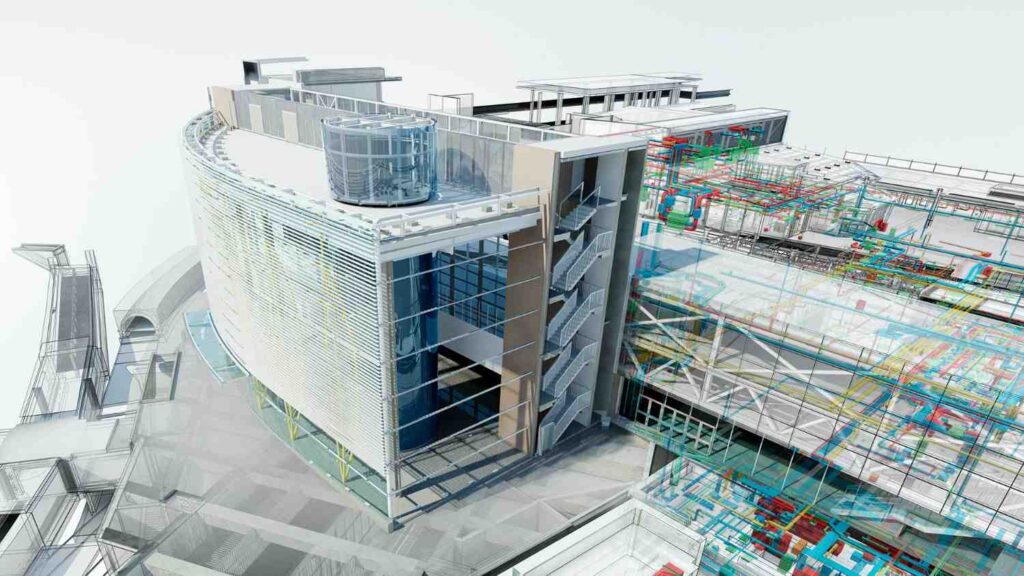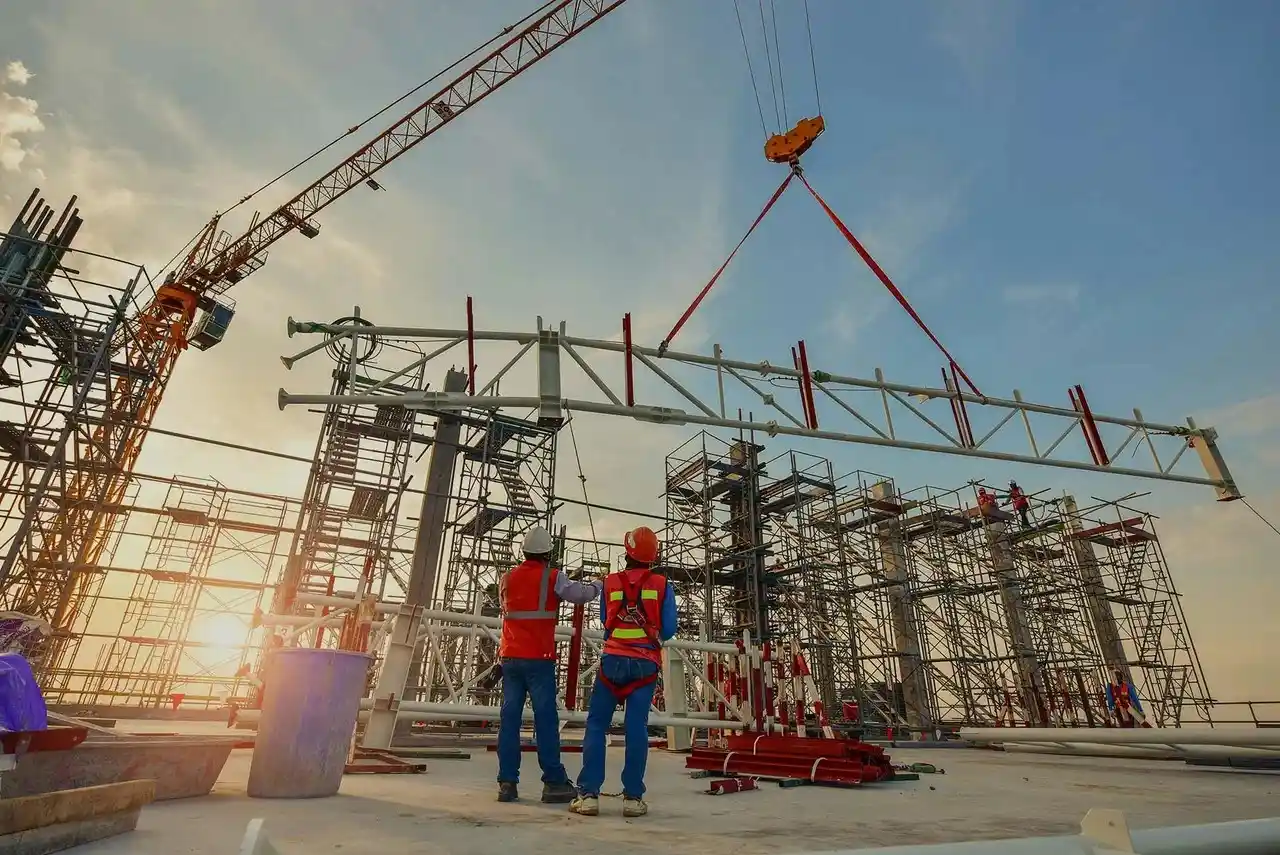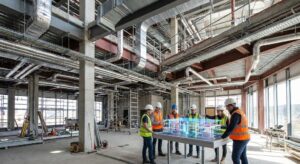Have you ever wondered how buildings soar high in stormy weather or how bridges support hundreds of thunderous cars? The solution can be found in what is structural engineering a very important specialization under civil engineering that aims to build secure, sound, and sturdy structures.
Structural engineers are the ones accorded the responsibility to ensure that all structures, such as houses and buildings, stadiums, and tunnels their structures, and warehouses are not only fit to face the daily utilization and harsh environmental conditions but are also fit to last long. In this post, we will take a closer look at what is structural engineering and why it is important, and how this field enables and empowers the world around us.
The Role of Structural Engineering
Understanding what is structural engineering means recognizes its role in protecting lives and enabling architectural vision. Structural engineers examine how loads, pressures, stresses, and so on affect the structures and make sure that the structures are robust enough to resist the effects. They choose appropriate materials, design of the structural members (such as beams, columns, and foundations), and come up with a system that will maintain the structures secure and serviceable. Their work with architects and builders can hit the right value of aesthetics, functionality, safety, and economy perfectly at bay- and turn the idea into a strong, stable structure that you can rely on.
History & Evolution of Structural Engineering
The core of what structural engineering is about is the science and art of making structures, buildings, bridges, towers, etc. well well-designed and stable. Structural engineers determine the effect that different forces exert on a structure, such as gravity, wind, earthquakes, or moving loads.
- Ancient Foundations: Early civilizations put the foundation in building structures like monumental pyramids in Egypt, or aqueducts in Rome. These buildings are made using primitive equipment without modern tools and are testaments to intelligent thinking in regards to load paths and materials.
- Industrial Revolution Breakthroughs: The 18 th century and the 19 th century were the ones that brought tremendous change. The invention of reinforced concrete, steel and then iron enabled engineers to make structures taller, broader and solid than ever before.
- 20th Century to Modern Day: The 20th century evolved what pertains to structural engineering to an exact science. The formulation of mathematical theories, structural mechanics, and codes of safety standardised design practices. Advancements in technology have enabled the construction of buildings such as the Burj Khalifa and even offshore platforms that are immense.
- Digital & Future Advancements: The modern age of digital engineering through computer simulations, Building Information Modeling (BIM), and Artificial Intelligence tools is redefining what is structural engineering. Now engineers can engage in studying how structures will respond in extreme circumstances, prior to starting the construction process, making the structural design of tomorrow smarter, safer, and more sustainable.

Core Principles of Structural Engineering
To understand what is structural engineering, it is interesting to dwell upon the scientific principles of it. Physicists will be able to work as structural engineers by applying physics, mathematics, and material science in order to create efficient structures that will be strong.
Loads & Forces
All buildings have to be able to withstand a number of loads, including the weights of the building ( dead loads), people and furniture (live loads),and environmental effects such as wind, snow, and earthquakes. It is through understanding of these forces that structural engineering centres around.
Stress & Strain
Engineers research on the deformability of materials under loads. This aids in the acquisition of the appropriate material and shape to avoid a breakdown when strained.
Stability & Equilibrium
One of the most important aspects of what is structural engineering is that the structures must not go off balance, and thus avoid tipping, sliding, and collapsing.
Safety Factors & Codes
Bridges have to be engineered with a safety factor and constructed in codes. These codes help to maintain the safety of people and the good performance of the structure in its lifetime.

Materials Used in Structural Engineering
The foundation of every structural design is materials, and most times, the final strength, durability, and appearance of a structure is significantly determined bythe choice of material. Before structural engineers can utilize a certain material in their design, they need to be knowledgeable of the relative physical behavior of that material, its cost, and performance over time.
- Concrete – Strong in compression and widely used for foundations, columns, and floors. Often reinforced with steel to resist tension.
- Steel – Flexible yet extremely strong, ideal for high-rise buildings, bridges, and large-span roofs.
- Timber – Traditional, sustainable, and lightweight, often used in homes and eco-friendly buildings.
- Masonry – Bricks, blocks, and stones create durable walls and facades with excellent compressive strength.
- Composite & Modern Materials – Carbon fiber, glass fiber, and recycled materials represent the future of what is structural engineering, offering performance and sustainability.
Types of Structures Designed
There is singularly broad diversity in the type of structures designed and engineered by structural engineers with each of the structures having their own requirement on the performance, complexity, as well as risks. They go well beyond mere buildings and influence nearly all of the significant parts of the built form.
- Buildings (Residential, Commercial, Industrial): Structures where people live and work are engineered for safety, comfort, durability, and energy efficiency — from small home renovations to iconic supertall towers.
- Bridges, Overpasses & Viaducts: Bridges, overpasses, and viaducts form the major transport corridors that are used to bridge a physical barrier in the form of a river, a road, and even a valley. Such structures are highly designed so that they suit dynamic loads, counter environmental considerations, and last for decades with low maintenance.
- Towers, Chimneys & Transmission Masts: These are very slender tall structures and they have to grapple with the problems of wind and seismic forces. Structural engineers guarantee stability by providing optimum geometry, sturdy foundation, and similar lightweight materials.
- Water & Earth Structures (Dams, Retaining Walls, Reservoirs): These are very demanding structures that have to support massive lateral thrusts caused by soil and water pressure. There is no stopping when it comes to failure, thus the safety margin, seepage and structural integrity are of utmost importance.
- Offshore & Marine Structures: Oil rigs, offshore wind turbine towers, wharves, and piers are located in harsh environments where there is the added stress of corrosion, waves and salt water. This kind of building is dependent on a specific design that can withstand fatigue, movement, and excessive loading.
- Sports Arenas, Long-Span Roofs & Unique Architecture: Buildings in contemporary places of worship can shape and stretch to maximize visibility and space often with long-span structures as the stadiums and other examples. They tend to push computational design, material science and creativity to their extreme and are, in many cases, the hallmark of engineering brilliance.
The Design Process in Structural Engineering
To have a clear understanding of what is structural engineering, one has to learn of the ordered and detailed procedure that yields safe and practicable structures.
Conceptual Planning
Any project starts with the consultation of the customers, their architects, and engineers. In this case, structural engineers come up with provisional structural systems, evaluate site conditions, and present a method to securely accommodate architectural purposes. A clear knowledge of what is structural engineering will aid in the conversion of visual ideas into buildable concepts.
Preliminary Design & Load Estimation
Engineers calculate the pressure that the building should endure such as gravity, live loads, the wind, earthquake, and temperature effects. In order to calculate potential framing systems and types of foundations, as well as to assess them, early calculations and drawings are developed.
Detailed Analysis & Calculations
The stage responds to the most important questions at the core of what is structural engineering. Will the structure be able to stand all the expected circumstances? Complex mathematical models are used to analyse strain, stress, deflection, and load paths so that the engineers can size the beams, columns, slab,s and connection details.
3D Modeling & Simulation (BIM)
The engineers can digitally simulate the behavior of structures with software such as ETABS, SAP2000, and Revit. They do what-ifs, maximize material, and make sure performance requirements are met well before the first nail is pounded.

Construction Drawings & Documentation
The end products are elaborate plans, sections, reinforcement programs, detailed shop drawings, and specifications and all these products direct the on-site contractors. In this documentation the theory of what constitutes structural engineering is translated to practice in a clear manner.
Site Supervision & Inspections
Closely supervised by structural engineers during its construction, their visit to the site can be to check workmanship, to check reinforcement and to approve alterations. They are there so that everything can be constructed in accordance with the plans towards safety and durability.
Career Path & Responsibilities of a Structural Engineer
To truly appreciate what is structural engineering, it is important to explore the people behind the profession. Structural engineers typically begin their journey with a degree in civil or structural engineering, followed by licensing and professional certifications. Early in their careers, they focus on drafting, calculations, and helping senior engineers prepare design documents. As they gain experience, they take on greater responsibilities, such as leading design teams, coordinating with architects and contractors, and making key decisions regarding structural systems.
Structural engineers may specialize as design engineers, site engineers, forensic investigators, or project managers. Regardless of the role, every professional in this field shares the same mission: to master what is structural engineering so that the structures we rely on every day remain safe, efficient, and enduring.
Conclusion
From ancient monuments to next-generation smart cities, structural engineering continues to play a powerful — yet often unseen — role in shaping our world. Understanding what is structural engineering reveals a discipline rooted in physics, creativity, and responsibility. Structural engineers not only make it possible for us to live, work, and travel safely within remarkable structures, but they also champion innovation for a resilient and sustainable future. As urban populations grow and environmental challenges intensify, the value of structural engineering will only become more critical. Ultimately, it is the silent art of turning imagination into safe reality.
If you’re looking for trusted expertise in this field, Strand Consulting Corporation is a reliable name to know. Located at 490 Wheeler Rd, Suite 108, Hauppauge, NY 11788, the firm can be reached at (631) 805-3179 for professional structural engineering services tailored to modern needs.





